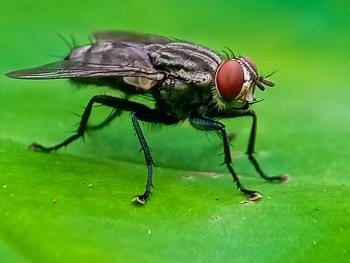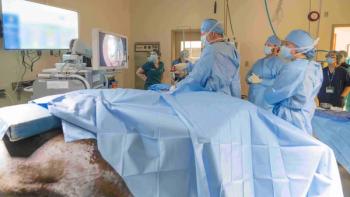
DVMs remain top information source for dairy producers, survey says
Fort Collins, Colo.-Who would you rely on for information in the event of a foreign animal disease outbreak?
Fort Collins, Colo.-Who would you rely on for information in the event of a foreign animal disease outbreak?
Dairy clients picked you.
The National Animal Health Monitoring System (NAHMS) reports that veterinarians ranked first (92.8 percent) as an information source. Other top answers included other dairy producers (40.5 percent), magazines (41.8 percent), state veterinarians (35 percent) and extension agent (34.2 percent). (See Table 1.)
It's just one finding in the newest 104-page report entitled, "Part III: Reference of Dairy Cattle Health and Health Management Practices in the United States" from NAHMS Dairy 2002 survey.
The survey questioned producers about animal disease, management, milking procedures, antibiotic use and nutrient management.
According to the survey, dairy producers had some familiarity with foot-and-mouth disease and anthrax. USDA adds that industry awareness about Johne's disease increased over the last few years "due to concentrated efforts to educate producers and control the disease. In fact, 45.3 percent of respondents were "fairly knowledgeable" about the disease. Another 42.3 percent "knew some basics", while only 1 percent had not heard of the disease before. The other 11.4 percent of the respondents recognized the name only.
The survey also pinpoints areas where education can be improved. Anthrax was only recognized by name from 54 percent of producers.
More than 50 percent of all lameness cases on U.S. dairies were attributed to digital dermatitis, accounting for 53.9 percent of lameness cases in cows and 61.8 percent of lameness cases in bred heifers, USDA reports.
Here are some other findings:
- Cull rates across the United States, which included cow deaths for Dairy Herd Improvement Association calculations, are generally reported to be between 30 and 35 percent. About 25 percent of cows were reported culled in 2001, and 4.8 percent of cows died.
- The percentage of operations that reported giving coliform mastitis vaccines to a majority of cows during 2001 was 35.8 percent, which accounted for 57.1 percent of all cows.
- Only 10.4 percent of dairy operations representing 20.6 percent of cows administered Salmonella vaccine to the majority of cows.
- Only 8.7 percent of participating operations were fairly knowledgeable about Mycoplasma mastitis, while 22.9 percent had never heard of the disease. Less than half of operations (46.6 percent recognized the name only).
- More than three-fourths of participating operations (76.6 percent) did not use antibiotics in rations for weaned dairy heifers during the 12 months prior to the Dairy 2002 interview. Less than a fifth of operations (17.5 percent) included antibiotics in heifer rations.
- Overall, 75.2 percent of operations treated all cows (100 percent) with dry cow intramammary antibiotics at the time of drying-off. Almost 6 percent of operations did not treat any cows with this type of antibiotic at drying-off.
- More than one in three operations (34.5 percent) had an average bulk tank somatic cell count (BTSCC)of 200,000 to 299,000, while 23.6 percent of operations had an average of BTSCC of 300,000 to 399,000. Only 2.4 percent of operations had an average BTSCC of 600,000 or more.
For more information go to www.aphis.usda.gov/vs/ceah/cahm
Newsletter
From exam room tips to practice management insights, get trusted veterinary news delivered straight to your inbox—subscribe to dvm360.




